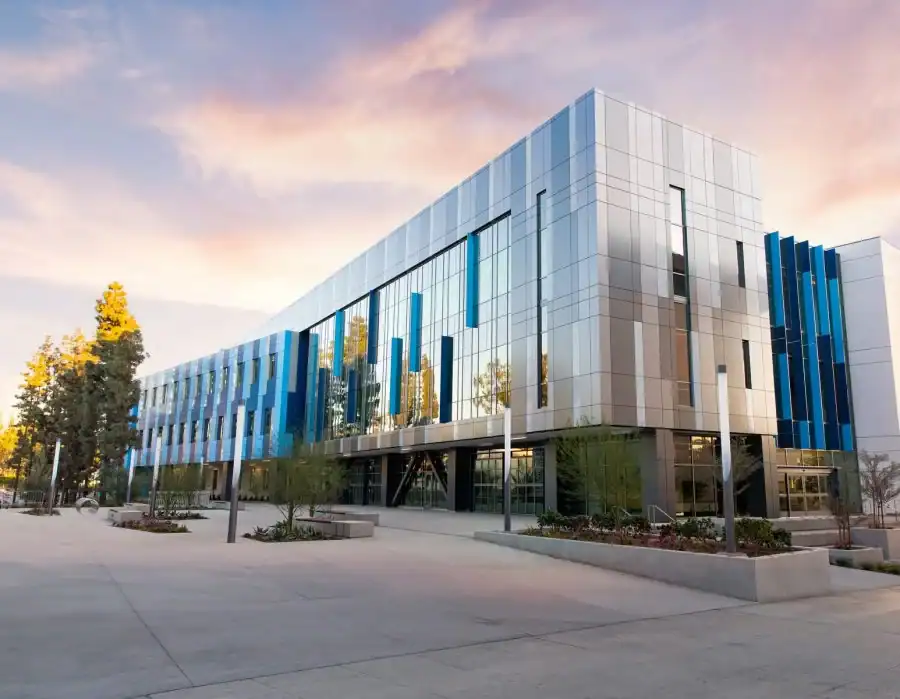As demographic trends reshape the global economy, one of the most profound shifts is the aging of populations in both developed and emerging markets. This transformation is not only a public health and policy concern—it is also a powerful force shaping the real estate investment landscape, particularly for Real Estate Investment Trusts (REITs).
Healthcare REITs, which invest in assets like hospitals, medical office buildings, senior housing, rehabilitation centers, and long-term care facilities, stand to benefit significantly from the demographic aging trend. The growing demand for accessible, high-quality healthcare infrastructure across urban and suburban areas makes healthcare REITs one of the most promising sectors in the coming decades.
In this article, we explore how the aging population impacts REIT demand, particularly in healthcare real estate. We examine the types of properties healthcare REITs invest in, the key drivers of demand, regional considerations including the Arab world, and the challenges and opportunities that come with this rapidly evolving market.
Understanding the Aging Population Trend
Globally, people are living longer than ever before, thanks to advances in medical technology, better nutrition, and improved public health systems. At the same time, birth rates in many countries are declining, leading to a demographic structure increasingly dominated by older adults.
According to the United Nations, the number of people aged 65 and older is projected to more than double between 2020 and 2050, reaching over 1.5 billion worldwide. This shift is particularly acute in countries like Japan, Germany, and Italy, but is also becoming more pronounced in emerging economies, including many Arab nations.
In the Gulf region, for example, improvements in healthcare services and living conditions have extended life expectancy, and many governments are now focusing on providing better elder care services. Egypt, Saudi Arabia, and the UAE are seeing a steady rise in their elderly populations, creating both a need and an opportunity for expanded healthcare infrastructure.
How Aging Affects Real Estate Demand
An older population brings different housing and service needs compared to younger, working-age individuals. The elderly are more likely to require medical attention, specialized care, mobility-accessible living arrangements, and proximity to healthcare services.
This trend has profound implications for real estate. Unlike traditional residential or office spaces, healthcare real estate is purpose-built to meet the needs of a population that relies on health services throughout the aging process. These facilities need to be safe, accessible, and close to major population centers or suburban communities.
As the elderly population grows, so does the demand for properties such as:
- Senior housing and assisted living communities
- Skilled nursing facilities
- Rehabilitation and physical therapy centers
- Medical office buildings and outpatient clinics
- Hospitals and specialized care centers
- Memory care units for patients with dementia or Alzheimer’s
Healthcare REITs invest in these property types, offering long-term, income-generating assets with relatively stable cash flows due to the essential nature of the services provided.
The Structure of Healthcare REITs
Healthcare REITs operate much like other types of REITs but specialize in acquiring, developing, and leasing healthcare-related properties. Many of these REITs lease facilities to healthcare providers on long-term agreements, often with triple-net lease structures that pass property-level expenses (taxes, maintenance, and insurance) to the tenant.
Some healthcare REITs also form joint ventures with hospital operators or senior housing providers, diversifying their income streams while maintaining asset ownership. These REITs may also include built-in rent escalators that protect against inflation and enhance long-term revenue visibility.
Key characteristics that make healthcare REITs attractive include:
- Predictable and resilient income from essential services
- Long lease terms with reputable healthcare operators
- Defensive sector performance during economic downturns
- Strong demographic tailwinds supporting demand growth
Because healthcare is a non-cyclical sector—meaning people need medical care regardless of the economic environment—healthcare REITs often demonstrate less volatility than other property sectors, such as office or retail.
Senior Housing: A Major Focus Area
Among all healthcare real estate segments, senior housing presents one of the most direct responses to aging demographics. These properties range from independent living communities, where seniors maintain autonomy but live in age-friendly environments, to assisted living facilities and nursing homes that provide higher levels of medical support.
The demand for senior housing is expected to increase steadily over the next two to three decades, especially in countries where baby boomers are entering retirement age. In the United States alone, it is estimated that over 70 million people will be over 65 by 2030. Similar trends are emerging in Europe and parts of Asia.
In the Arab region, senior housing is still in its early stages, largely due to strong cultural norms of multigenerational family living. However, as urbanization increases and lifestyles evolve, the need for formal eldercare solutions is growing. Cities like Dubai and Riyadh are already witnessing a shift, with private developers and healthcare REITs exploring senior living communities that blend privacy with medical support and social integration.
Senior housing can also offer higher yields compared to other residential assets, especially when operated efficiently. However, they require specialized property management and adherence to strict regulatory standards, making them more complex than traditional real estate investments.
Medical Office Buildings (MOBs) and Outpatient Facilities
Another critical area of focus for healthcare REITs is the growing demand for outpatient care. As healthcare systems move toward decentralized models—treating patients outside hospitals whenever possible—medical office buildings and outpatient clinics are becoming essential.

These properties typically house general practitioners, specialists, imaging centers, laboratories, and outpatient surgery clinics. They are often located near hospitals or in suburban areas to provide convenient access to care.
Medical office buildings are seen as lower-risk assets due to:
- Long-term leases with creditworthy healthcare tenants
- Steady patient traffic
- Reduced dependence on hospital systems
- Lower operating costs compared to acute care hospitals
Healthcare REITs investing in MOBs often achieve strong occupancy rates, as demand is driven by population growth, chronic disease management, and the shift toward preventive care.
In the MENA region, governments are heavily investing in expanding access to outpatient care. This includes building neighborhood clinics and family health centers, many of which are now being operated under public-private partnerships (PPPs). REITs can partner with healthcare operators to acquire and manage these facilities, offering investors a way to participate in the expansion of national health systems.
Hospitals and Specialized Care Facilities
Acute care hospitals remain critical pillars of healthcare systems, although they are often more complex and capital-intensive investments. Healthcare REITs that invest in hospitals typically enter into sale-leaseback agreements with operators, enabling the REIT to own the real estate while the hospital focuses on medical operations.
Specialized care facilities—such as cancer treatment centers, dialysis clinics, and behavioral health institutions—are also gaining attention as standalone assets that offer predictable income streams and fulfill growing societal needs.
With chronic conditions such as diabetes, cardiovascular diseases, and mental health issues on the rise in many parts of the world, the demand for specialty facilities is increasing. Healthcare REITs with portfolios that include such properties may enjoy higher tenant retention, better lease structures, and fewer vacancies.
In the Arab world, high-profile projects like King Abdullah Medical City in Saudi Arabia or the Cleveland Clinic Abu Dhabi illustrate the region’s growing focus on specialized, world-class healthcare. These institutions require substantial real estate investment, and REITs can play a critical role in financing and managing such infrastructure.
Challenges and Considerations
While healthcare REITs offer strong long-term potential, they also come with unique challenges that investors must consider:
- Regulatory Complexity: Healthcare is heavily regulated, and changes in government policy, reimbursement models, or licensing can affect tenants and income.
- Operator Risk: The success of a healthcare REIT depends heavily on the financial health and reputation of its tenants. A poorly managed hospital or senior living operator can lead to cash flow disruptions.
- High Capital Requirements: Building and maintaining healthcare facilities requires significant capital investment. REITs must have the financial strength and operational expertise to manage these assets efficiently.
- Location Sensitivity: Proximity to population centers, hospitals, and transportation is critical. Poorly located facilities may face low occupancy or operational inefficiencies.
Despite these risks, careful asset selection and strong partnerships with experienced healthcare operators can mitigate many of these concerns.
The Future of Healthcare REITs in Arab Markets
While healthcare REITs are well-established in North America, Europe, and parts of Asia, they are still developing in most Arab countries. However, the growth potential is significant. Governments in the Gulf Cooperation Council (GCC), as well as in Egypt and Jordan, are prioritizing healthcare infrastructure as part of broader national development goals.
Private investment in healthcare is being encouraged through initiatives such as:
- Healthcare privatization programs
- PPP frameworks for hospital and clinic development
- Medical tourism initiatives
- Aging and eldercare strategies within national visions (e.g., Saudi Vision 2030)
As these initiatives take hold, real estate investment vehicles—including REITs—will find increasing opportunities to participate. Whether through building senior living facilities, outpatient centers, or rehabilitation clinics, REITs can contribute to expanding healthcare access while generating steady, long-term income.
Conclusion: A Sector with Long-Term Tailwinds
The aging population is not a short-term phenomenon—it is a structural trend that will continue for decades. As more people live longer and require ongoing care, healthcare real estate will become increasingly central to both national healthcare systems and private investment portfolios.
Healthcare REITs stand at the intersection of demographic change, real estate development, and essential service delivery. With proper due diligence, geographic diversification, and tenant partnerships, these REITs offer investors a defensive yet growth-oriented asset class.
For regions like the Middle East and North Africa, where healthcare infrastructure is expanding and populations are beginning to age, healthcare REITs represent a compelling opportunity to align long-term investment returns with meaningful social impact.










